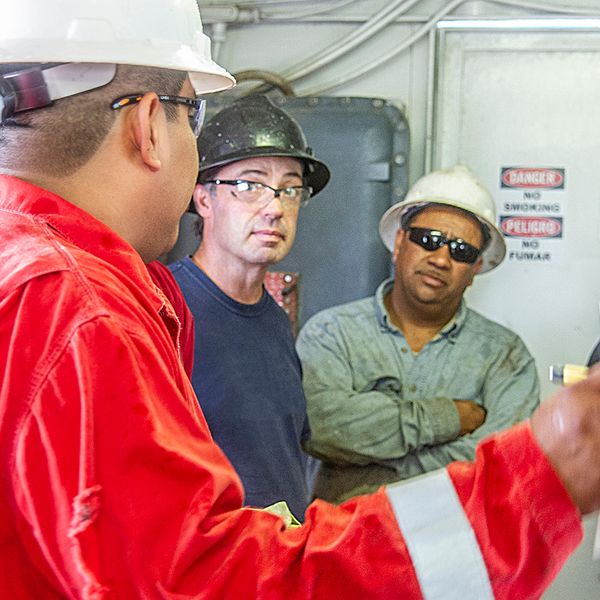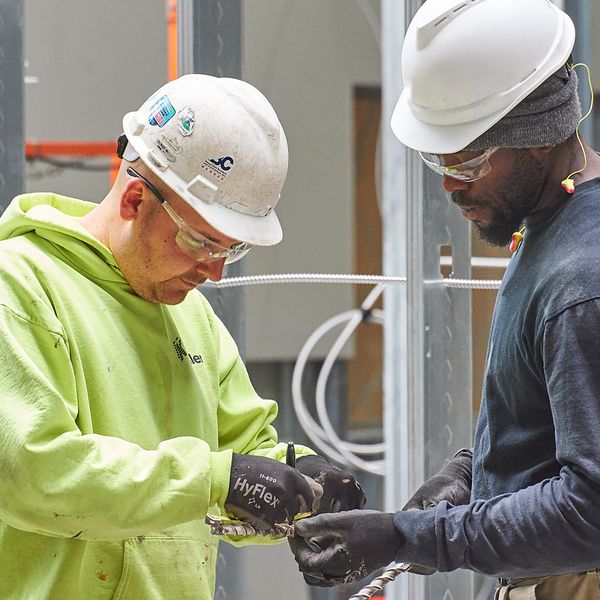Protecting your workers from lightning strikes
Did you know that employers must continually be aware of any potential hazards or unsafe work conditions or practices in the workplace and take an active role in eliminating them? In the United States, lightning injures an average of 300 people and kills 80 people yearly.
People are most commonly struck at the beginning or end of a storm, outside of heavy rain, and in smaller storms when they have a false sense of security and tend to take more chances. Employers shouldn’t take chances, either. Strike down inclement weather hazards to ensure the safety of outdoor workers, like in this event below.
A work crew for a landscaping company was moving pallets of rocks from the bed of a dump truck into a front-end loader, which was positioned at the back of the truck. A 16-year-old worker and two other workers were standing in the bed of the dump truck. Another worker was operating the loader, and the dump truck driver was standing on the ground beside the loader.
A thunderstorm was approaching, and light rain was falling, but the crew continued to work. Just after 9:00 a.m., lighting struck, injuring the three workers in the back of the dump truck. The 16-year-old worker was knocked unconscious as the lightning entered his left shoulder and exited his right ankle. The truck driver was thrown at least 10 feet from the work area but was uninjured. The truck’s antenna was melted, the driver’s side mirror shattered, and burn marks were left on the concrete surrounding all the tires.
Witnesses and volunteers from a nearby building responded quickly by calling 911 and rendering first aid. The three workers were transported to a local hospital. The 16-year-old worker died from his injuries 11 days later. What accident prevention recommendations would you make to prevent this type of incident from happening at your workplace?
Accident prevention recommendations
After the accident, investigators concluded employers should:
- Include procedures for inclement weather in a written safety and health program,
- Ensure that all workers are trained on inclement weather policies and procedures, and
- Evaluate worksite weather conditions, including temperature extremes that cause heat stress.
What weather procedures is your workplace following to protect workers from lightning strikes?
Weather procedures
In this incident, the employer did not have a safety and health program that included proper severe weather safety measures, even though many employees worked outdoors.
| Need more information about keeping your workers safe during extreme temperatures? See our ezExplanation for Temperature Extremes. |
Employers are obligated to provide a working environment free from recognized hazards. A comprehensive written safety program should be established to outline policies and procedures for recognizing and controlling hazards and working under safe operating procedures. Inclement weather precautions should also be included in the program for outdoor workers.
Training
The injured employees in this incident were the highest objects in the area, were surrounded by a metal dump truck, and were wet from the rainy conditions. This made them targets for a lightning strike. Outdoor workers are at greater risk of injury associated with severe weather hazards if they underestimate or fail to recognize these types of hazards.
When hired for outdoor work, employees should be trained on the precautions to take during inclement weather, including:
- Monitoring inclement weather conditions continuously.
- Activating emergency procedures when thunder is heard, or lightning is seen.
- Seeking safe shelter inside a home, building, or fully enclosed vehicle. Avoid rooftops, open areas, natural lightning rods (e.g., tall, isolated trees), water, and areas close to metal objects such as power poles, fences and gates, light poles, machinery, and electrical equipment.
- Suspending activities for 30 minutes after the last observed lightning or thunder.
According to the National Lightning Safety Institute, the important thing to remember is to “anticipate a high-risk situation and move to a low-risk location.”
This incident may have been prevented had the crew’s work been temporarily suspended and employees been directed to a place of safety.
Worksite evaluation
Weather conditions should be monitored visually and via local radio stations, severe weather radio monitors, or lightning prediction systems before beginning work and throughout the workday. In this incident, the supervisor, the person competent to make an assessment, had just left the site. The remaining crew members, untrained in weather safety, continued to work as assigned.
Key to remember
A competent person should be designated to assess the worksite and re-evaluate weather conditions as needed. This person should have the ability and the authority to terminate work processes when unsafe conditions are or are anticipated to occur soon.




















































